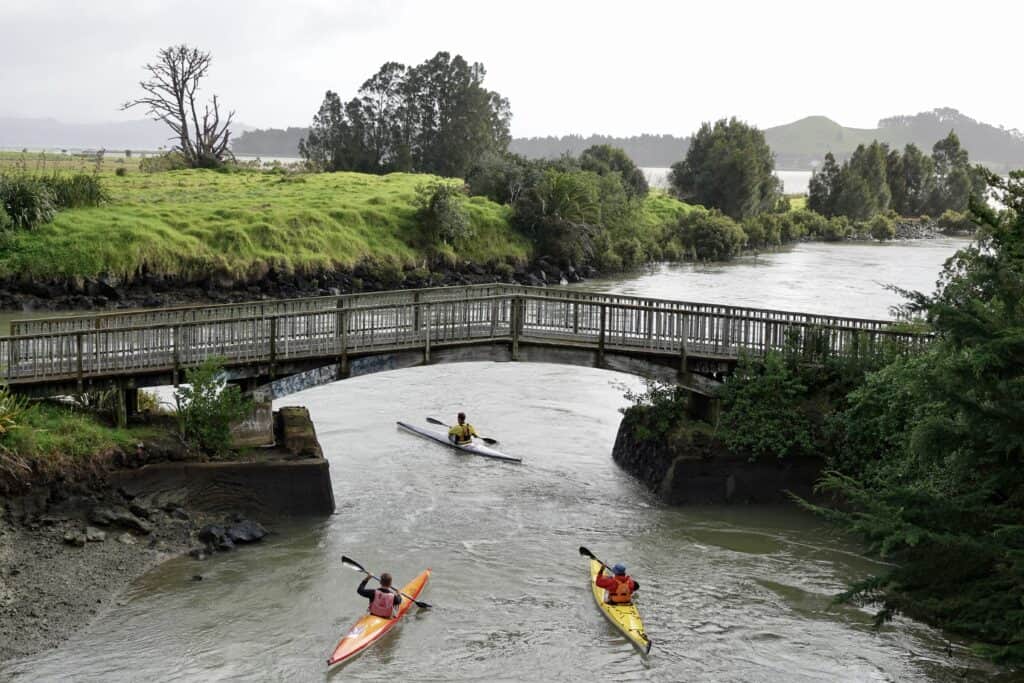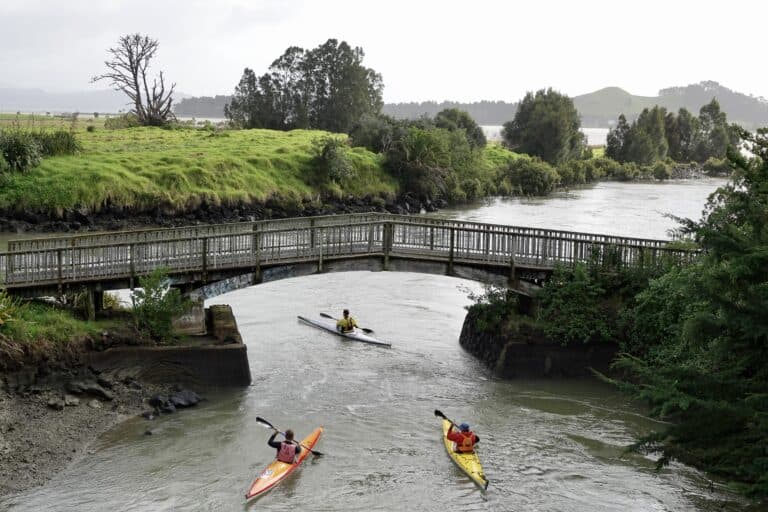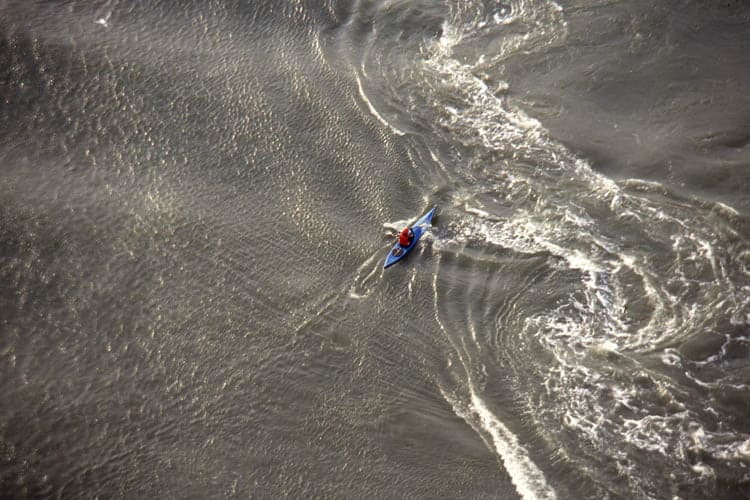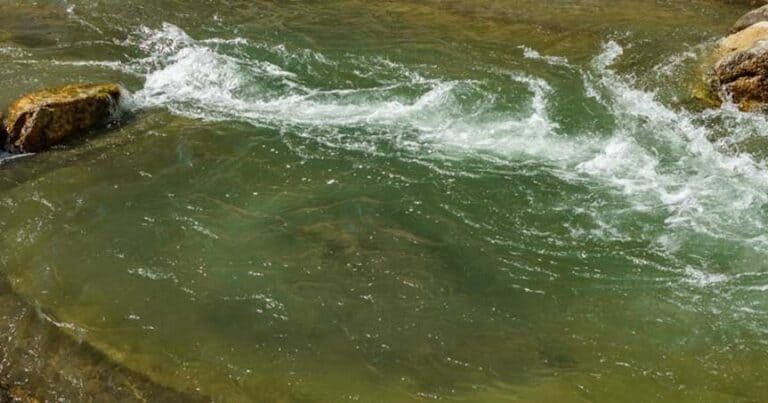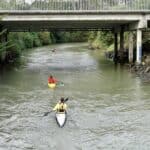- Overview
- Gallery
- FAQ
- Dates & Pricing
2 hour river training workshop in Auckland
Duration: 2 hrs
SNM takes you from whatever level you are at (beginner-intermediate) and advances toward mastery of moving waters before embarking on a river trip with more serious consequences.
Let SNM introduce you to the moving water environment if you have never paddled on swift moving water before. You will prepare for kayaking rivers by advancing flatwater kayaking skills onto moving waters. Your SNM kayak coach will introduce new concepts enabling you to competently manage tidal streams, currents and moving waters.
Training with tidal currents and moving waters is an excellent way to prepare for kayaking rivers. These dynamic environments offer unique challenges and opportunities that can enhance your skills, build confidence, and improve your overall paddling ability.
We will practice the ferry glide, eddyline features and paddle strokes for river kayak preparation.
Double kayaks welcome too!
Cover components of the Coast to Coast Grade 2 certificate BEFORE going on the river:
1.1 Identifies and responds appropriately to moving water features: eddylines.
1.3 Demonstrates efficient and effective forward paddling.
1.4 Demonstrates efficient and effective forward and reverse sweep strokes. Remains balanced.
1.5 Demonstrates effective low brace. Can right self from tipping point.
1.6 Demonstrates breaking in and out of eddies. Can hold desired line. Remains balanced.
1.7 Demonstrates ferry gliding. Can hold desired line. Remains balanced.
2.1 Understands correct use of personal kayaking and safety equipment. Can identify appropriate and inappropriate equipment. Including kayak, PFD, helmet, thermals, paddle, spraydeck.
2.8 Can describe and identify, prevention, symptoms and treatment of hypothermia.
Here's why training with tidal currents and moving waters is beneficial:
Skill Development: Tidal currents and moving waters present a range of conditions, including eddies, waves, and rapids. By training in these environments, you can develop essential kayaking skills top prepare for kayaking rivers such as reading water, maneuvering through obstacles, ferrying, and eddy hopping. These skills are transferable and crucial for navigating rivers effectively.
Adaptive Decision-Making: Rivers are ever-changing, and so are tidal currents and moving waters. River kayak preparation and training in dynamic environments helps you develop adaptive decision-making skills. You learn to assess and react to different water features, adjust your paddle strokes and body positioning, and make split-second decisions to navigate safely and efficiently. This adaptability is crucial when encountering unexpected scenarios or obstacles on river runs.
Paddle Technique and Efficiency: Moving waters and tidal currents require precise paddle technique to maintain control and conserve energy. Training in these environments allows you to refine your paddle strokes, improve your bracing and rolling techniques, and become more efficient in your movements. As you encounter varying currents and waves, you'll learn how to utilize the water's energy to your advantage, making your paddling more effective to prepare for kayaking rivers.
Confidence Building: Dealing with the power and unpredictability of moving waters can be intimidating, especially for novice kayakers. However, river kayak preparation gradually exposes you to these environments and training in controlled conditions, building confidence in your abilities. As you become more comfortable reading water features, navigating rapids, and understanding the dynamics of moving waters, your confidence will grow, allowing you to tackle river challenges with more self-assurance.
Water Safety Awareness: Training in tidal currents and moving waters helps prepare for kayaking rivers through a developed sense of river safety. You learn to recognize potential hazards, understand the importance of proper gear and safety equipment, and practice self-rescue techniques. Additionally, training in these environments provides an opportunity to practice swimming in moving waters, improving your ability to navigate and stay safe if you find yourself out of your kayak in a river scenario.
River Maneuverability Skills: Rivers often require precise navigation through narrow channels, around obstacles, and through complex features. River kayak preparation and training with tidal currents and moving waters helps sharpen your river navigation skills. You'll become more adept at identifying main flow lines, reading river features, and making strategic choices to follow the most efficient and safest routes.
River training safety first
When training with tidal currents and moving waters, it's essential to prioritize safety. Start with experienced instructors or guides. Gradually progress to more challenging environments as your skills and confidence grow to best prepare for kayaking rivers.
Training with tidal currents and moving waters is an invaluable part of preparing for kayaking rivers. It helps you develop crucial skills, adaptability, and confidence, while also enhancing your paddle technique, safety awareness, and river navigation abilities. By incorporating these training experiences into your kayaking journey, you'll be well-prepared to tackle the challenges and enjoy the rewards of paddling rivers.
When kayaking on rivers and currents, wear safety gear, use eddies for rest, ferry across currents, practice self-rescue, and navigate obstacles skillfully for an enjoyable and safe experience. Practice on moving waters and tidal currents before going on rivers.
To use river currents to propel your kayak, position your kayak at an angle to the current, facing upstream. Paddle forward while staying in the current, allowing it to push you sideways and downstream. Adjust your angle and paddle strokes to maintain control and take advantage of the natural flow of the river.
To ferry glide a kayak in currents, angle your kayak upstream and paddle across the current at a slight angle, using a combination of forward and draw strokes to maintain a diagonal path and offset the downstream drift.
Water currents can significantly impact kayaking. They can propel or hinder your progress, affect stability, require strategic navigation, and necessitate skillful maneuvering to safely navigate through eddies, waves, and obstacles.
